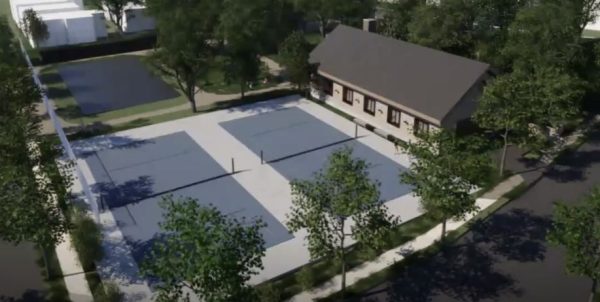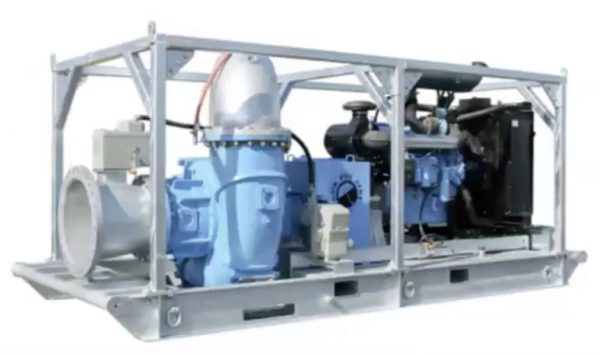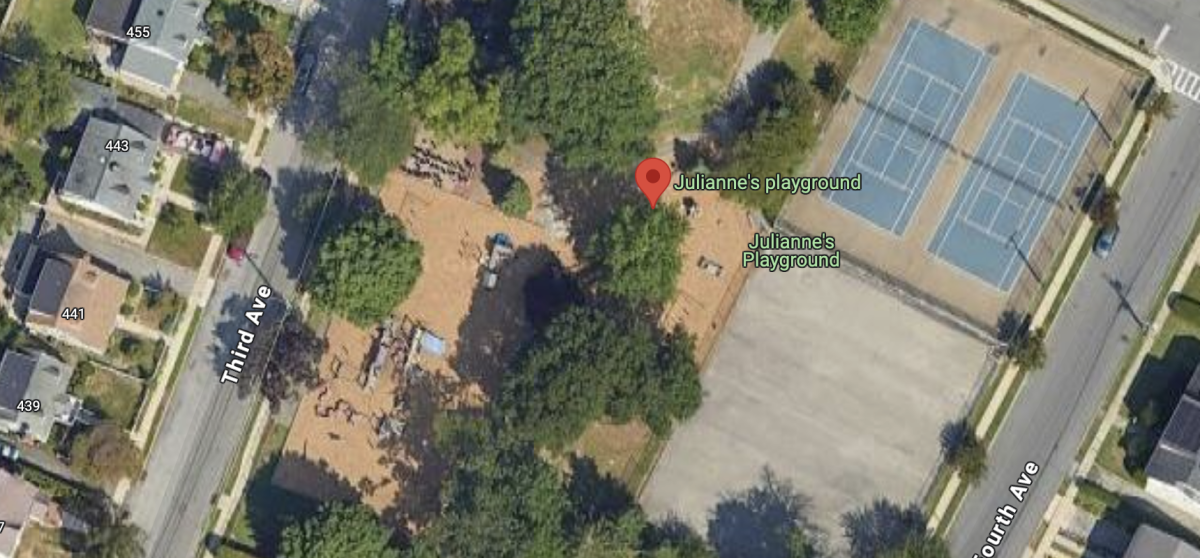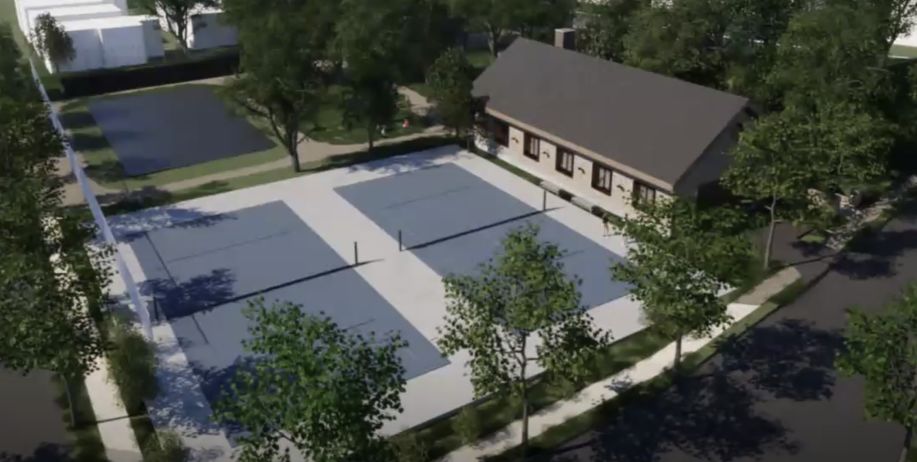The Village of Pelham Board of Trustees reviewed in detail the diesel pumps and underground reservoir recommended for Julianne’s Playground during a work session last Tuesday on the proposed overhaul of the storm water sewers.
The capacity of the north Pelham storm-water system was found to be limited—able to handle up to 1.7 inches of rainfall, according to Anthony Oliveri, vice president with AI Engineers, the firm the village hired for the project. North Pelham’s sewer network requires larger box culverts, two additional outfalls to the Hutchinson River and the pump station and three-million-gallon underground reservoir system at the park to boost the capacity of the system to 8.96 inches of rain, he said during the session, which was held in-person and over Zoom.
In its report published last fall, AI Engineering proposed the reservoir and pumps for the area under and near the blacktop and tennis courts at Julianne’s Playground, which is owned by the Pelham school district. The site is downstream from significant portions of the watershed to the north and east, which would allow those areas to be captured, Oliveri said. Any other location would not effectively pick up enough runoff to sufficiently reduce flows, he said.
Oliveri estimated the cost of the entire Pelham storm-water effort at $36 million, which is lower than the $39 million quoted during meetings last fall for the project whose goal is to reduce serious flooding that occurs in north Pelham and the Highbrook Avenue area during major rain storms.

Village Administrator Christopher Scelza told the work session the conceptual plan currently being reviewed could take as long as two and a half years to become final due to the need to consult with geotechnical engineers, to agree with the school district on Julianne’s Playground and to apply for grants. After the conceptual phase would come the engineering phase with a geotechnical study and finally the construction phase.
The village and school district have been in so-far unsuccessful talks over some form of transfer of Julianne’s Playground to the village. On April 23, Village of Pelham Mayor Chance Mullen said the village rejected the school district’s only offer, which was to exchange Julianne’s for an undefined piece of the village’s Wolfs Lane Park that could be used by the school district to build an administration building or science lab. The school system did not have an interest in any other village parcel or in money for the park, Mullen said.
That same day, the Pelham school board announced it is hiring special legal counsel to fight a possible attempt by the village to “condemn and seize part or all” of the park using eminent domain powers.
During public comment at the work session, one Pelham resident expressed concern that the negotiations between the school district and the village have not been resolved. She asked why the board was not taking into consideration another approach rather than being “stuck in the mud” with the Julianne’s Playground plan “that is holding up everything.”
Mullen answered legal proceedings using eminent domain to take the land from the district are possible. Condemning homes near the park for the reservoirs is another option, he said. He has talked about both approaches before.
Trustee Theresa Mohan said, “The village board is working behind the scenes to try and make sure” it is making progress.
The pump station would need five diesel units in a house-like building, each one handling 28,000 gallons per minute to meet the watershed’s maximum capacity of 120,000 gallons per minute, Oliveri said. He ruled out non-diesel pumps because they would require electric power from Con Ed and thus more equipment including generators to withstand storms, increasing the overall size of the building.
The proposed pump station is designed to only run in the event of a larger storm, Oliveri said. Then, a diversion structure on Fourth Avenue would direct flows into the detention system, and pumps would turn on in stages as needed to discharge the collected water to the Hutchinson River. The pumps and reservoir are capable of moving three million gallons in 25 minutes. Bronxville has a similar pump station to the one being proposed, and it runs about 24 hours per year, Oliveri said.

John Hargett, an architect with AI Engineers, said the current design for the system has the pump house set off to the side of the tennis courts at Julianne’s Playground, with the reservoir constructed under the courts. The pump station would be 2,900 square feet and include bathrooms to increase amenities at the park. The structure would take up less than four percent of the area at Julianne’s, and its adjacency to the tennis courts would allow for the possibility of bleachers along the courts and a splash pad nearby, he said.
“We’re not just simply putting a utility building in a playground,” Hargett said. “We want to treat it with respect and provide something nice.”
Ralph Mastromonaco, a consulting engineer who worked on the hydrology and hydraulics for the project, said the flow from north Pelham would not have an effect on the Hutchinson River since the neighborhood is near to the river’s end. “In general, it’s an accepted fact that when your community is at the bottom of a watershed, whatever they do there doesn’t have much of an effect on the river,” he said.
During public comment, a resident said they calculated nine inches of rain on 256 acres of land would be significantly more water than the pump station and reservoir could handle.
Mastromonaco said only a portion of any such deluge would be moved into the giant tank and out by the pumps, while the rest would go directly through the storm sewers to the outflow into the river.
“The costs are obvious, in the $30 million range,” said resident Arthur Long. “I was wondering if you could quantify the benefits in this analysis, since this affects a part of town that does not economically contribute to town as much.”
Mullen said that question would need to be directed to the grant team, since that analysis is done separate from the conceptual design.
- The village boards and the town council make decisions that affect Pelham’s residents. The Pelham Examiner brings the discussions, the policies and the votes that impact taxes and neighborhoods. Donate to support our nonprofit community newspaper.







